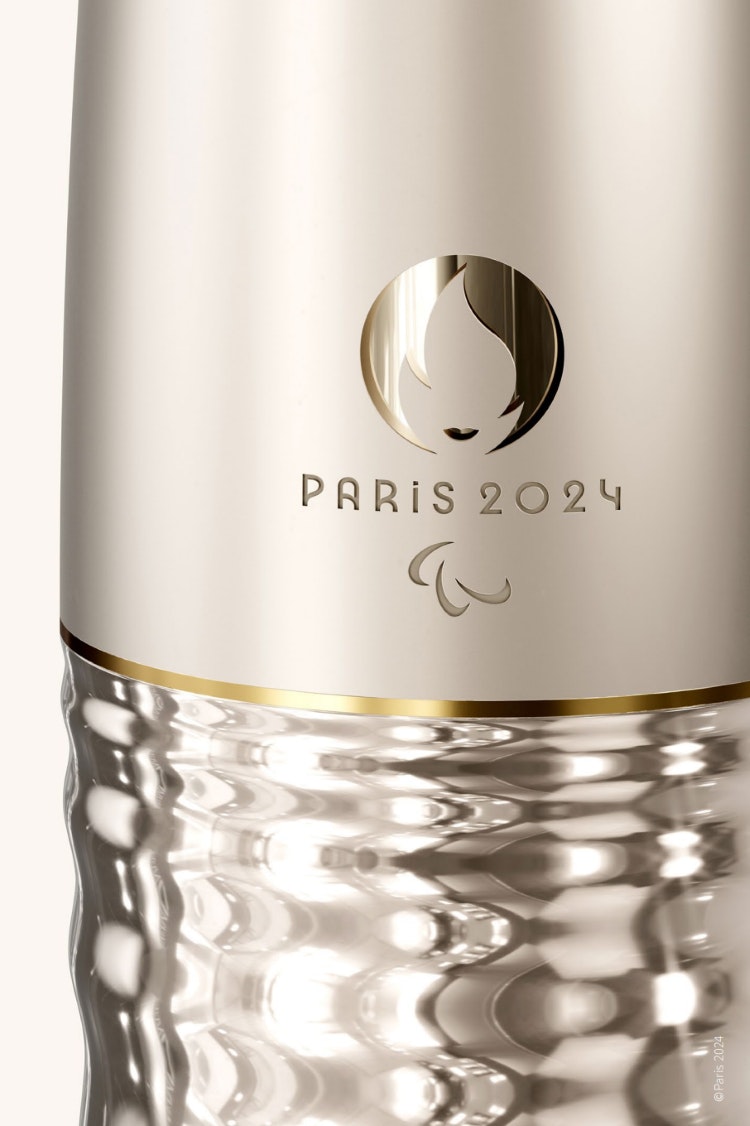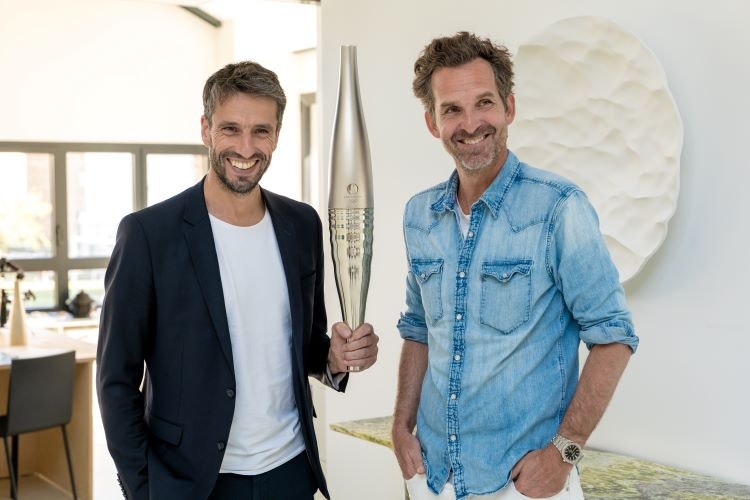The new Paris 2024 Olympic torch has been revealed, designed by Mathieu Lehanneur to be “perfectly symmetrical” and with a 3D effect of rippling water.
Drawing on three core themes – equality, water and peacefulness – chosen by the designer to align with the games’ values, Lehanneur sought to create a torch that was “pure, iconic and almost elemental”. He describes the process as “ritualistic and magical in equal measure”.

Paris 2024 marks a greater shift towards equality and parity as, for the first time in the history of the games, as many women as men will take part in the competition. The team behind the games has also committed to putting the same ambition into organising the Paralympic Games as the Olympic Games and – as with the emblem and mascot – the two torches share the same design.
“For the first time in its history, it plays upon this duality and equilibrium”, says Lehanneur. To physically convey this, he says he designed the torch to be “perfectly symmetrical”, both horizontally and vertically.
One of the biggest challenges, says Lehanneur, was that the torch must respond to “potentially extreme climate conditions”, making it “an object of great technical complexity”. He developed a system of lateral grooves located at the back of the torch, which he believes “makes the flame even more beautiful, even more visible, and almost unfaltering” by protecting it.

Incorporating water into the design was particularly important, as Paris’s River Seine – which Lehanneur describes as “the beating heart of the city” – will act as a natural stage for the Olympic and Paralympic Games’ opening ceremonies and other events. Moreover, as well as travelling around mainland France, the torch will also undertake the “Relais des Océans” (Relay of the Oceans) to reach its five overseas territories: Guadeloupe, French Guiana, Martinique, French Polynesia and Réunion.
A 3D vibration effect on the torch reproduces the intricate ripples and waves seen across moving water when light reflects on its surface.
Harking back to its ancient Greek origins, the flame has always been “an object of transmission and the incarnation of peace”, according to Lehanneur. With this in mind, he says he looked to infuse gentleness through a design “entirely based on curves and continuous lines”.
Steel company ArcelorMittal will manufacture the torches using 100% recycled steel from scraps. To reduce the impact of production, only 2000 torches will be made, which is five times fewer than in previous Olympic Games.
The making process involves rolling the steel on lines that are usually used for the most demanding products in the automotive and food packaging industries. Then, at ArcelorMittal’s site at Woippy, the steel is cut into blanks ready for shaping.

ArcelorMittal’s partners carry out the final stages of production, with an added element of craftsmanship. A well-known goldsmith based in Normandy is responsible for shaping the sheets in their factory in Vire, forming the top and bottom parts of the torch. These sections are then sent to a final industrial group, which applies a high-tech coating to all the steel parts, giving the torch its characteristic appearance and colour.
Lehanneur describes the colour as “a very light, soft gold” – a similar colour to what you’d achieve when mixing the gold, silver and bronze hues of the medals.
Design has always been part of the Olympic torch’s rich history, used to interpret and showcase defining qualities of the host countries. Japanese designer and architect Tokujin Yoshioka looked to sustainability and Japan’s high-speed Shinkansen bullet train for the 2020 Tokyo Olympic Games torch, while Sao Paulo-based studio Chelles & Hayashi’s designs referenced the natural beauty surrounding Rio for the 2016 Rio Olympic Games.

- Design disciplines in this article
- Industries in this article
- Brands in this article










